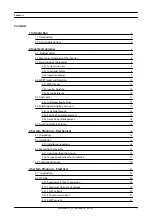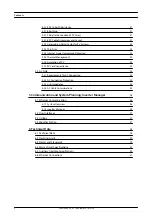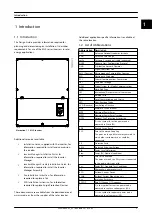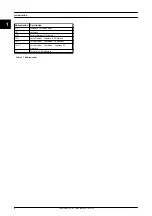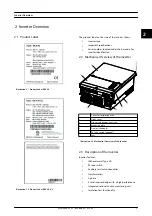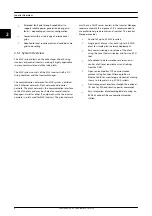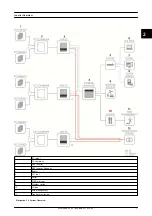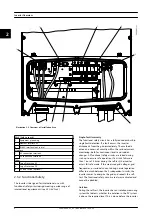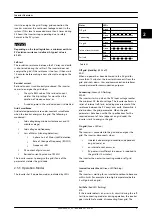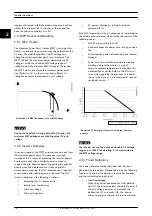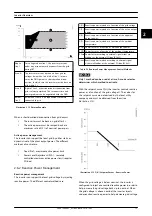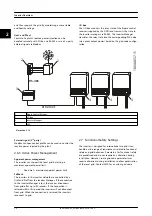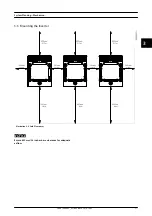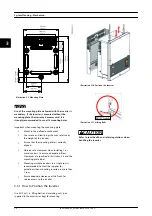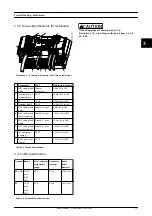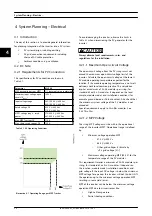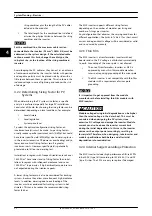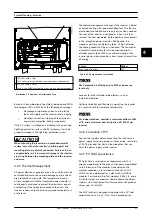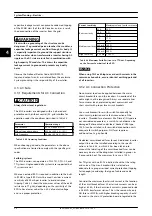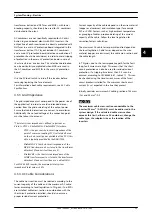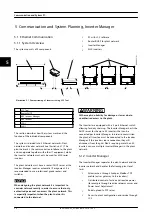
2.5.1 Grid Protection Settings
The grid protection settings are stored in each inverter.
They ensure protection of the grid in case of certain grid
events regardless of the connection to the Inverter
Manager. The inverter continuously monitors the following
grid values, and compares them to the disconnection
values specified in the grid code. Example:
•
Voltage disconnection
•
Frequency disconnection
•
Reconnection
•
Loss of mains
Voltage and frequency disconnection
The cycle RMS values of the grid voltages are compared
with 2 lower and 2 upper trip settings, for example
overvoltage (stage 1). If the RMS values violate the trip
settings for more than the duration of ‘clearance time’, the
inverter ceases to energise the grid.
Illustration 2.11 Overvoltage and Undervoltage Disconnect
Reconnection
During start-up or when the inverter has disconnected
from grid due to for example overvoltage or frequency,
the reconnection values determine under which grid
conditions the inverter can reconnect to the grid and start
injecting energy.
Loss of Mains (Islanding) disconnection
Loss of Mains (LoM) is detected by 3 different algorithms:
•
3-phase voltage surveillance (the inverter has
individual control of the 3-phase currents). The
cycle RMS values of the phase-phase grid
voltages are compared with a lower trip setting
or an upper trip setting. If the RMS values violate
the trip settings for more than the duration of
‘clearance time’, the inverters cease to energise
the grid
•
Rate of change of frequency (ROCOF). The ROCOF
values (positive or negative) are compared to the
trip settings. The inverter ceases to energise the
grid when the limits are violated
•
Frequency shift. The inverter continuously tries to
‘push’ the grid frequency a bit, but the stability of
the grid prevents this from happening
In an LoM situation, the stability of the grid is no longer
present, and this makes it possible to change the
frequency. As the frequency deviates from the operational
frequency of the line, the inverter disconnects and ceases
to energise the grid. If the inverter ceases to energise the
grid due to grid frequency or grid voltage (not 3-phase
LoM), and if the frequency or voltage is restored within a
short time (short interruption time), the inverter can
reconnect when the grid parameters have been within
their limits for the specified time (reconnect time).
Otherwise, the inverter returns to the normal connection
sequence.
2.6 Grid Support (Ancillary Services)
The ancillary services are comprised in 2 main categories:
•
Fault Ride Through (FRT).
•
Reactive and active power management.
2.6.1 Fault Ride Through
The grid voltage usually has a smooth waveform, but
occasionally the voltage drops or disappears for several
milliseconds. This is often due to short circuit of overhead
lines, or caused by operation of switchgear or similar in
the high-voltage transmission lines. In such cases, the
inverter can continue to supply power to the grid using
fault ride through (FRT) functionality. Continuous power
supply to the grid is essential:
•
To help prevent a complete voltage blackout and
stabilise the voltage in the grid.
•
To increase the energy delivered to the AC grid.
There are 4 different behaviours to select from:
•
Zero Current
•
Reactive current only
•
Active current only
•
Full current – reactive priority
How FRT works
shows the requirements that must be
followed by FRT. The example is for German medium-
voltage grids.
Inverter Overview
12
L00410648-02_02 / Rev. date: 2014-10-03
2
2


